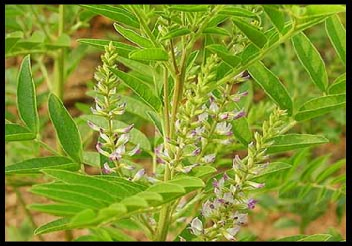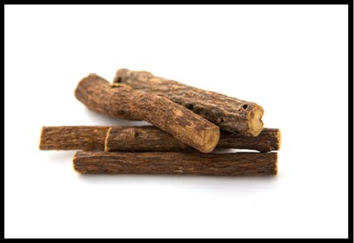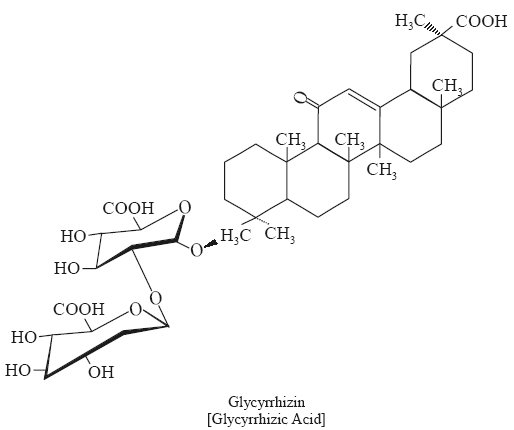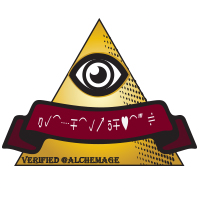Abstract
Licorice root is an extremely versatile herb used both in traditional and modern medicinal applications. It is a member of the Leguminosae/Fabaceae family with two common varieties viz. Chinese licorice (Glycyrrhiza glabra) and American licorice (Glycyrrhiza uralensis), with the former being the most predominantly available. The dried roots of licorice contain many triterpenoids and hundreds of flavonoids working synergistically to support the medicinal qualities of this herb. Medicinal applications include use as an anti-inflammatory, anti-bacterial, anti-fungal, anti-diabetic, antiviral, anti-ulcer, antitussive, anti-oxidant, skin whitening, anti-diuretic agent. This article is a review of various available literature regarding traditional and modern applications of Glycyrrhiza spp.
1. Introduction


2. Bioactive constituents

3. Traditional uses
Licorice root has been regularly paired with other herbs in order to harmonize the qualities of other herbs in traditional Chinese medicine (TCM) mixtures for centuries.10 Licorice root has been used in TCM to treat upper respiratory infections, bronchitis, stomach and spleen qi deficiency, poor appetite, loose stools, and more.9 Licorice root in Iran has found its way into different applications for its anti-inflammatory and anti-microbial properties.9 The Greeks used licorice root to treat asthma and coughs, diseases affecting the voice, and diseases of the lungs.9 Pliny suggested that licorice be used as a remedy for asthma, malaises of the throat, and ulcerations of the mouth in his Naturalis Historia of Plinius (~77 AD).11 Furthermore, licorice root was used as an herbal medicine that could treat artery diseases, heart palpitations, and angina in Germany during the Middle Ages.9 Licorice root has been found to be used in both cosmetics and as food additives due to its anti-microbial properties.9 Cosmetics produced in Japan have frequently contained licorice root extracts. Licorice root also produces an anti-inflammatory effect which makes it great for use in creams, lotions, and other topicals. Licorice root also contains saponins which gives it the ability to mix polar and nonpolar components used in cosmetics.9 American folk magic states that carrying a cross made by tying two sticks together with red yarn will protect one against injury and negativity.5 Most commonly, however, licorice root has been associated as a symbol of love and sex.12
4. Pharmacological activity in literature
4.1 Anti-inflammatory activity
Reports show that GL and its aglycone, GA, show great anti-inflammatory properties. Their action on this response is similar to that of glucocorticoids and mineralocorticoids. GA was shown to inhibit all factors responsible for the body’s inflammation response during in vitro studies. It inhibits cyclooxygenase activity and prostaglandin formation.13
4.2 Antiviral activity
Research shows GL to be an effective antiviral against vaccinia, herpes simplex 1, Newcastle disease, vesicular stomatitis. Results of this study showed GL irreversibly inactivates the herpes simplex 1 virus.14 In vitro studies were able to show that GL effectively inhibits the replication of the Human-Immunodeficiency virus.15 GL has also been shown to be effective in suppressing replication of the SARS-coronavirus.16 GL inhibits influenza’s capability of binding to DNA, in turn reducing its ability to replicate.17 GA was shown to reduce rotovirus yields by 99% subsequent to viral inoculation. Levels of viral proteins VP2, VP6, and NSP2 were all significantly reduced.18 GA inhibited the human respiratory syncytial virus through several mechanisms, including preventing viral attachment.19
4.3 Antimicrobial activity
Recent studies over the years have shown that components of Glycyrrhiza spp. possess significant antimicrobial properties against both Gram-positive and Gram-negative bacteria, such as Staphylococcus aureus, Escherichia coli, Pseudomonas aeruginosa, Candida albicans, and Bacillus subtilis.20-23 GA was shown to decrease the expression of SaeR and Hla, key virulence genes of Methicillin-resistant staphylococcus aureus, which produced bactericidal activity in GA and effectively destroyed MRSA.20 LCA and GLD were shown to significantly inhibited biofilm production and hyphal transition of C. albicans producing fungicidal activity.24 LTG has been shown to prevent the production of α-hemolysin, an important exotoxin in the pathogenesis of S. aureus, thereby protecting the body against staphylococcal infections.25 In brief, the antimicrobial activity of Glycyrrhiza spp. is in most part due to GA, LCA, GLD, and LTG.
4.4 Anti-ulcer activity
Recent studies have begun to show that most patients with ulcers are simultaneously infected with Helicobacter pylori.26 Due to its antibacterial activity against H. pylori, GL has been strongly implicated as a progressive treatment for ulcers.27
4.5 Anti-malaria activity
LCA has been reported to show significant activity against malaria. In vivo studies in mice with P. yoelii showed that LCA was able to eradicate the malaria parasite completely with no toxicity at 1000 mg/kg.28
4.6 Hepatoprotective activity
GL has been shown to significantly inhibit CCl4 induced liver damage at concentrations of 25–200 μg/ml. Alteration of the membrane fluidity by GL has been a theorized mechanism. GA presents hepatoprotective activity through lipid peroxidation and inhibiting free radicals.29 GL is effective in treating acetaminophen-induced hepatotoxicity.30
4.7 Immunostimulatory activity
In vitro studies showed that extracts of Glycyrrhiza glabra at 100μg/ml concentration improved the immune response. Production of TCD69 lymphocytes and macrophages from human granulocytes was significantly increased. Where in vivo studies showed that licorice root extract prevented the rise of immune-complexes related to autoimmune disorders.31
5. Contraindications
While Glycyrrhiza spp. has been recognized as generally safe for consumption, GA acts as an inhibitor of an enzyme which metabolizes cortisol falsely increasing urinary cortisol levels while blood serum levels remain unchanged.32 GA has been found to be responsible for an exaggerated ACTH response which can lead to hypocalcemia, and pseudoaldosteronism (a condition mimicking hyperaldosteronism which leads to hypertension) due to the enzyme inhibition developing excess levels of cortisol in the kidneys.33 Due to this cascade of effects, individuals who are prone to low blood pressure should consult their doctors before using Glycyrrhiza spp. Many different medications are shown to have cross-interactions with Glycyrrhiza spp. and thus anyone on medications should consult their doctors before using this herb.
6. Conclusion
Glycyrrhiza spp. having been studied for its medicinal value as an herb comes to no surprise with herbal medicines being brought to the public’s attention once again. The therapeutic properties of Glycyrrhiza spp. span many areas of health and help in some severe cases where modern pharmaceuticals are lacking. Glycyrrhiza spp. has been shown to be active against antibiotic resistant strains of bacteria like MRSA while also yielding potential for a vast array of other pathogens as an antibiotic, antiviral, and an antifungal. This herb also shows great potential as a hepatoprotective agent, anti-ulcer, anti-inflammatory, and an immunostimulatory agent. Further research is needed to standardize dosages and to further validate current findings, especially in the area of in vivo studies. However, due to its extremely low toxicity, Glycyrrhiza spp. surely shows significant potential for the future of medicine.
Abbreviations
GA- Glycyrrhetic Acid
GL- Glycyrrhizin
GLD- Glabradin
LCA- Licochalcone A
LTG- Liquiritigenin
MRSA-> Methicillin-resistant staphylococcus aureus
TCM- Traditional Chinese Medicine
References
- Z.L. Wang, J.C. Du, L.Q. Yu, D.L. Ba, Z. Shi. “The utilization value, current research and problems of Glycyrrhiza.” Grassland of China, 24 (2002), pp. 73-76.
- Henry George Liddell, Robert Scott. “A Greek-English Lexicon.” A Greek-English Lexicon, γλυ^κύ-ρρι_ζα. http://www.perseus.tufts.edu/hopper/text?doc=Perseus:text:1999.04.0057:entry=gluku/rriza. Accessed March 8, 2020.
- Glória M. “SWEETENERS | Others.” Encyclopedia of Food Sciences and Nutrition. 2003:pp.5695-5702. doi:10.1016/b0-12-227055-x/01404-8.
- Damle M. “Glycyrrhiza glabra (Liquorice) - a potent medicinal herb.” International Journal of Herbal Medicine. 2014;2(2):pp.132-136.
- “CFR - Code of Federal Regulations Title 21.” accessdata.fda.gov. ttps://www.accessdata.fda.gov/scripts/cdrh/cfdocs/cfcfr/CFRSearch.cfm?fr=184.1408. Accessed February 8, 2020.
- Fu B, Li H, Wang X, Lee FSC, Cui S. “Isolation and Identification of Flavonoids in Licorice and a Study of Their Inhibitory Effects on Tyrosinase.” Journal of Agricultural and Food Chemistry. 2005;53(19):pp.7408-7414. doi:10.1021/jf051258h.
- KITAGAWA I. “Chemical Studies of Chinese Licorice-Roots. I. Elucidation of Five New Flavonoid Constituents from the Roots of Glycyrrhiza glabra L. Collected in Xinjiang.” Chemical and Pharmaceutical Bulletin. 1994;42(5). doi:10.1248/cpb.42.1056.
- Quirós-Sauceda, A. E., Ovando-Martínez, M., Velderrain-Rodríguez, G. R., González-Aguilar, G. A., & Ayala-Zavala, J. F. “Licorice (Glycyrrhiza glabra Linn.) Oils.” Essential Oils in Food Preservation, Flavor and Safety. 2016: pp.523–530. doi:10.1016/b978-0-12-416641-7.00060-2
- Jiang, Maoyuan. “An ‘Essential Herbal Medicine’—Licorice: A Review of Phytochemicals and Its Effects in Combination Preparations.” Journal of Ethnopharmacology, vol. 249, 1 Mar. 2020, doi:10.1016/j.jep.2019.112439.
- Z.L. Wang, J.C. Du, L.Q. Yu, D.L. Ba, Z. Shi. “The utilization value, current research and problems of Glycyrrhiza.” Grassland of China, 24 (2002), pp. 73-76.
- Fiore, Cristina, et al. “A History of the Therapeutic Use of Liquorice in Europe.” Journal of Ethnopharmacology, vol. 99, no. 3, 2005, pp. 317–324., doi:10.1016/j.jep.2005.04.015.
- Cunningham, Scott, and Scott Cunningham. Cunninghams Encyclopedia of Wicca in the Kitchen. Llewellyn Publications, 2013. pp. 118.
- Okimasu E, Moromizato Y, Watanabe S. Inhibition of phospholipase A2 and platelet aggregation by glycyrrhizin, an anti-inflammatory drug. Acta Med Okayama, 1983; 37, pp. 385-391.
- Pompei, Raffaello & Pani, Alessandra & Flore, O & Marcialis, MA & Loddo, B. Antiviral activity of glycyrrhizic acid. Experientia. 1980;36:304. 10.1007/BF01952290.
- Sasaki H, Takei M, Kobayashi M, Pollard RB, Suzuki F. “Effect of Glycyrrhizin, an Active
Component of Licorice Roots, on HIV Replication in Cultures of Peripheral Blood Mononuclear Cells from HIV-Seropositive Patients.” Pathobiology. 2002;70(4):229-236. doi:10.1159/000069334. - Cinatl J, Morgenstern B, Bauer G, Chandra P, Rabenau H, Doerr H. “Glycyrrhizin, an active component of liquorice roots, and replication of SARS-associated coronavirus.” The Lancet. 2003;361(9374):pp.2045-2046. doi:10.1016/s0140-6736(03)13615-x.
- Moisy D., Avilov S.V., Jacob Y., Laoide B.M., Ge X.Y., Baudin F. “HMGB1 protein binds to influenza virus nucleoprotein and promotes viral replication.” J Virol. 2012;86:pp.9122–9133.
- Hardy M.E., Hendricks J.M., Paulson J.M., Faunce N.R. “18β-glycyrrhetinic acid inhibits rotavirus replication in culture.” Virol J. 2012;9:96.
- Yeh C.F., Wang K.C., Chiang L.C., Shieh D.E., Yen M.H., Chang J.S. “Water extract of licorice had anti-viral activity against human respiratory syncytial virus in human respiratory tract cell lines.” J Ethnopharmacol. 2013;148:pp.466–473.
- Long D.R., Mead J., Hendricks J.M., Hardy M.E., Voyich J.M. “18β-Glycyrrhetinic acid inhibits methicillin-resistant Staphylococcus aureus survival and attenuates virulence gene expression.” Antimicrob Agents Chemother. 2013;57:pp.241–247.
- Awandkar S.P., Mendhe M.S., Badukale D.M., Kulkarni M.B. “Antimicrobial action of cold aqueous and cold ethanolic extracts of Glycyrrhiza glabra against bovine mammary pathogens.” Anim Sci Report. 2012;6:pp.88–91.
- Yoshida T., Yoshida S., Kobayashi M., Herndon D.N., Suzuki F. “Pivotal advance: glycyrrhizin restores the impaired production of β-defensins in tissues surrounding the burn area and improves the resistance of burn mice to Pseudomonas aeruginosa wound infection.” J Leukoc Biol. 2010;87:pp.35–41.
- Irani M., Sarmadi M., Bernard F., Ebrahimi P.G.H., Shaker B.H. “Leaves antimicrobial activity of Glycyrrhiza glabra L.” Iran J Pharm Res. 2010;9:pp.425–428.
- Messier C., Grenier D. “Effect of licorice compounds licochalcone A, glabridin and glycyrrhizic acid on growth and virulence properties of Candida albicans.” Mycoses. 2011;54:pp.e801–e806.
- Dai X.H., Li H.E., Lu C.J., Wang J.F., Dong J., Wei J.Y. “Liquiritigenin prevents Staphylococcus aureus–mediated lung cell injury via inhibiting the production of α-hemolysin.” J Asian Nat Prod Res. 2013;15:pp.390–399.
- Basso D, Plebani M, Kusters JG. “Pathogenesis of Helicobacter pylori Infection.” Helicobacter. 2010;15:pp.14-20. doi:10.1111/j.1523-5378.2010.00781.x.
- Chung J. “Inhibitory actions of sulindac on arylamine N-acetyltransferase activity in strains of Helicobacter pylori from peptic ulcer patients.” Toxicology in Vitro. 1999;13(2):pp.241-248. doi:10.1016/s0887-2333(98)00076-9.
- Sianne S, Fanie RVH. “Antimalarial activity of plant metabolites.” Nat Prod Rep. 2002; 19:pp.675-692.
- Jeong HG, You HJ, Park SJ, Moon AR, Chung YC, Kang SK et al. “Hepatoprotective effects of 18β- glycyrrhetinic acid on carbon tetrachloride-induced liver injury: inhibition of cytochrome P450 2E1 expression.” Pharmacological Research. 2002; 46:pp.221-227.
- Xu-ying W, Ming L, Xiao-dong L and Ping H. “Hepatoprotective and anti hepatocarcinogenic effects of glycyrrhizin and matrine.” J Chemico-Biological Interactions. 2009; 181(1):pp.15-19.
- Revers FE. “Clinical and pharmacological investigations on extract of licorice.” Acta Medica Scandinavica. 1956; 154:pp.749-751.
- Newell-Price JD. “Cushing Disease.” The Pituitary. 2017:515-571. doi:10.1016/b978-0-12-804169-7.00017-9.
- Kageyama K, Takayasu S, Moriyama T, Sakihara S, Suda T. “A Case of Pseudoaldosteronism, Accompanied with Hypocalcemia and Exaggerated ACTH Response.” Endocrine Journal. 2004;51(1):83-87. doi:10.1507/endocrj.51.83.


LOVELAUGHTER&&XHAOS
Cat-herder aka Chief Bigstick
High Priest, Church of Erin
Erisian Ataxia Troupe : Caste of the Black Star

(foto of my old, beloved allotment in Edinburgh)Brilliant article, thank you so much for the hard work you've put into this, @alchemage - I look forward to following you and learning more... I have a small liquorice plant in my wee street garden... I'm loving reconnecting with medicine, and hope to soon sell my beautiful Italian arthouse so I can have a bigger garden full of incredible healing nature <3
Oh wow! What a beautiful garden! I hope you can get back to what you love soon! Growing our own medicine is always so wholesome. I live in an apartment and hardly have space for anything, especially lacking in windows ! Thank you for your kind words and support. 🙏
Great article. The supplements I use are based off of TCM principles and one of the ingredients is licorice root extract. Who would have thought it has so many healing properties?
And I agre wholeheartedly with the first paragraph, although I do not mince words in such a way. Our medical system is catastrophically broken and most people have no idea to what extent...they think its “bad”...that’s like calling Hitler “unpleasant”.
Keep up the good writing and I’ll share you all over this bad boy and other platforms. The normies on FB have been getting a steady diet of Steemit articles from me. Even if they don’t make it and it gets censored, I spam that shit.
Thank you very much for your feedback! Yeah! Licorice root is an incredible herb and, like the article mentioned, is used incredibly often in TCM. Even in western herbalism, licorice root is often used as a synergistic agent in formulas.
Thank you again for your support!
Thank you so much for this amazing information! I have always used it with respiratory issues and coughs. I am glad to hear about the tested success with diminishing viral replication. This article is pure gold!
Licorice root is an incredible herb, and what I’ve listed here is only some of the literature for what it is useful for. There were probably four or five more tested areas of use that I just didn’t have the brainpower to add as I was drained at seven subsections lol Thank you for taking the time to read my work ♥️ I’m glad it helps solidify your application:)
I just picked some up to add to my medicinal collection. Thank you!
This post has been voted on by the SteemSTEM curation team
and voting trail. It is elligible for support from @curie and @minnowbooster.
If you appreciate the work we are doing, then consider supporting our witness @stem.witness. Additional witness support to the curie witness would be appreciated as well.
For additional information please join us on the SteemSTEM discord and to get to know the rest of the community!
Please consider using the steemstem.io app and/or including @steemstem in the list of beneficiaries of this post. This could yield a stronger support from SteemSTEM.
Indepth Research post. In my opinion nature holds so many Magical Medicinal aspects and all these aspects are just waiting to be discovered. Stay blessed.@alchemage, Thank you so much for this
Posted using Partiko Android
You are quite welcome, @chireerocks! Thank you for taking the time to read my work. I wholeheartedly agree with your sentiments about the magic of nature. Modern medicine is only just scratching the surface!
Welcome and thank you so much. Yes, that's sounds true about the Modern Medicine. Stay blessed.
@tipu curate
Upvoted 👌 (Mana: 25/30 - need recharge?)
Congratulations @alchemage! You have completed the following achievement on the Steem blockchain and have been rewarded with new badge(s) :
You can view your badges on your Steem Board and compare to others on the Steem Ranking
If you no longer want to receive notifications, reply to this comment with the word
STOPDo not miss the last post from @steemitboard:
Vote for @Steemitboard as a witness to get one more award and increased upvotes!
Your spam is really fucking annoying. You spam everybody, we ask you to stop, you refuse to, We downvote you, you downvote us. This is not what Jesus would do with his Steem account.
What Would Jesus Do With His Steem Account (WWJDWHSA) you should make some bracelets and cash in on that clever phrase!
The only person licensed to use the Jesus brand name is me, Jesus. Good idea though.